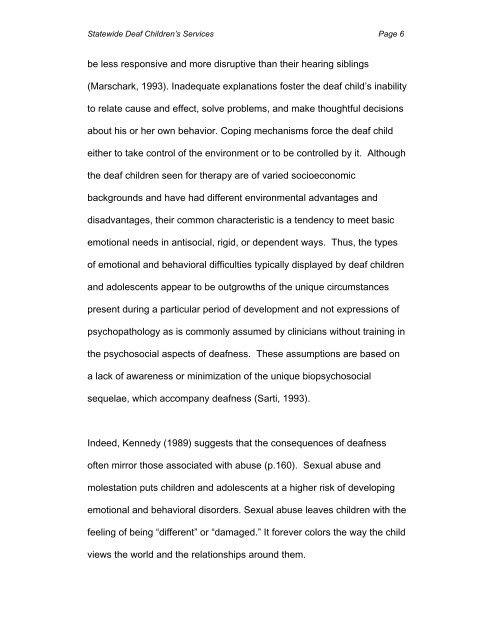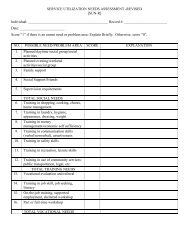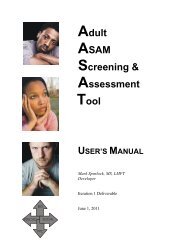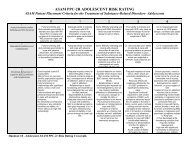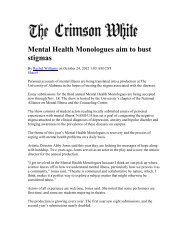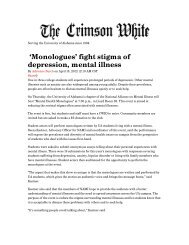Serving Severely Emotionally Disturbed Deaf Youth - Alabama ...
Serving Severely Emotionally Disturbed Deaf Youth - Alabama ...
Serving Severely Emotionally Disturbed Deaf Youth - Alabama ...
Create successful ePaper yourself
Turn your PDF publications into a flip-book with our unique Google optimized e-Paper software.
Statewide <strong>Deaf</strong> Children’s Services Page 6be less responsive and more disruptive than their hearing siblings(Marschark, 1993). Inadequate explanations foster the deaf child’s inabilityto relate cause and effect, solve problems, and make thoughtful decisionsabout his or her own behavior. Coping mechanisms force the deaf childeither to take control of the environment or to be controlled by it. Althoughthe deaf children seen for therapy are of varied socioeconomicbackgrounds and have had different environmental advantages anddisadvantages, their common characteristic is a tendency to meet basicemotional needs in antisocial, rigid, or dependent ways. Thus, the typesof emotional and behavioral difficulties typically displayed by deaf childrenand adolescents appear to be outgrowths of the unique circumstancespresent during a particular period of development and not expressions ofpsychopathology as is commonly assumed by clinicians without training inthe psychosocial aspects of deafness. These assumptions are based ona lack of awareness or minimization of the unique biopsychosocialsequelae, which accompany deafness (Sarti, 1993).Indeed, Kennedy (1989) suggests that the consequences of deafnessoften mirror those associated with abuse (p.160). Sexual abuse andmolestation puts children and adolescents at a higher risk of developingemotional and behavioral disorders. Sexual abuse leaves children with thefeeling of being “different” or “damaged.” It forever colors the way the childviews the world and the relationships around them.


